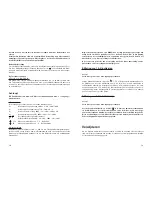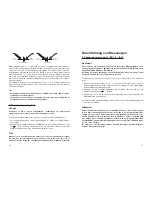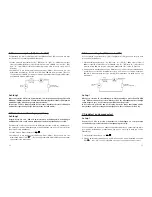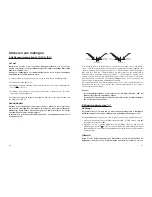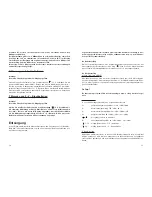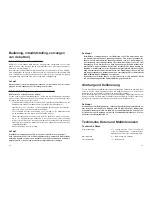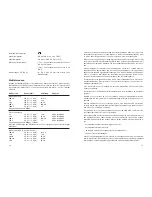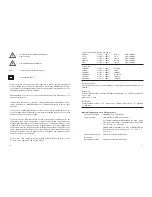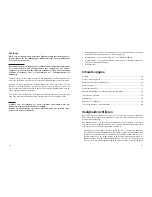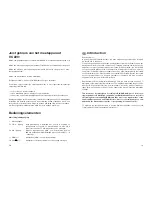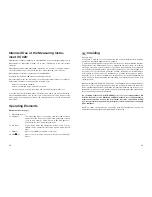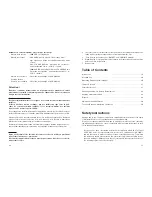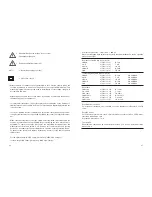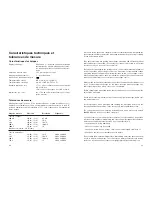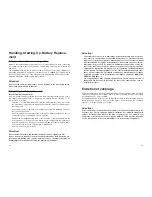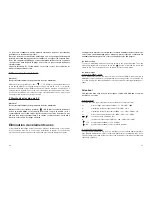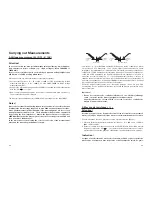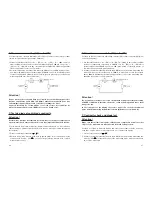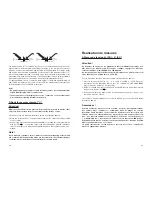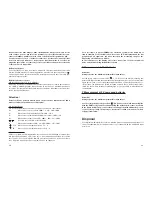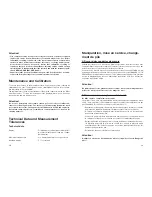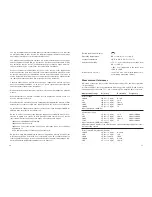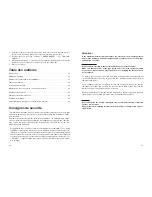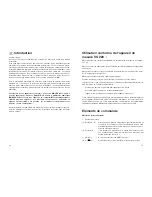
24
Handling, Starting-Up, Battery Replace-
ment
A Connection of the measuring cables
Only use the supplied measuring cables for your measurements. Before connecting
the instrument check the connector plugs or measuring prods and the insulation for
damages.
The supplied measuring cables are approved for voltages of up to max. 1000V. Your
measuring instrument is designed for voltages of up to 1000VDC or 750VACrms in
the over-voltage category II. Take particular care when dealing with voltages excee-
ding 30V alternating current or 60V direct current.
Attention!
Never exceed the max. input values as any damage to the measuring instru-
ment could mean danger to your life.
B Handling, battery replacement
B1 Inserting/replacing batteries
A 9V compound battery is required to operate the measuring instrument VC - 220. If
the battery replacement symbol is displayed, the battery is to be replaced. To do
this, proceed as follows:
- Separate your measuring instrument from the measurement circuit, disconnect
the measuring cables from the measuring instrument, switch it off and remove
the rubber case.
- Use an appropriate screwdriver (crosshead) to unscrew the fastening screws of
the lower housing shell.
- Cautiously lift off the lower part of the housing. The battery contacts (on the cir-
cuit board) for the current inputs are now exposed.
- Replace the discharged battery. Now, insert a new 9V compound battery into the
housing recess in the lower housing part (with the negative terminal showing to
the head) and place on the upper housing part. Make sure that the battery termi-
nals slide into the recesses of the battery compartment.
- Now, close the housing carefully.
Attention!
Never operate the measuring instrument when it is open. !Danger to life!
Do not leave used batteries in the measuring instrument. Even batteries pro-
tected against leaking may corrode and thus release chemicals that may be
detrimental to your health or destroy the battery compartment.
45
Attention !
- L’ouverture des capots ou le démontage risquent de mettre à nu des pièces
sous tension, sauf lorsqu’il est possible d’effectuer ces procédures manu-
ellement. Il se peut aussi que des branchements soient sous tension! Avant
toute intervention de réglage, de maintenance, d´entretien ou avant tout rem-
placement de pièces ou de modules, débrancher l´appareil de toutes les
sources de tension et circuits de mesure si vous devez l´ouvrir. Lorsque des
opérations de réglage, de maintenance ou de réparation sur l´appareil ouvert
et sous tension s´avèrent inévitables, celles-ci doivent uniquement être effec-
tuées par un technicien spécialiste connaissant parfaitement les risques
potentiels encourus et les prescriptions spécifiques en vigueur (VDE 0100,
VDE 0701, VDE 0683...).
- Les condensateurs dans l’appareil peuvent être encore chargés même si
l’appareil a été déconnecté de toutes les sources de tension et de tous les
circuits de mesure.
Entretien et calibrage
Afin de garantir la précision du multimètre pendant une période prolongée, il doit être
calibré une fois par an. Ce calibrage peut être effectué à faible coût par notre station
de calibrage dans « Service 2000 ».
Le remplacement du fusible est décrit séparément dans le chapitre après les gran-
deurs d'entrée maximum. Utiliser un chiffon propre, non pelucheux, sec et antista-
tique pour nettoyer l´appareil, ou l´écran.
Attention !
Pour le nettoyage, ne pas utiliser de produits contenant des hydrocarbures, de
l'essence, des alcools ou autres produits similaires. Ces produits attaquent la
surface de l'appareil de mesure. De plus, les vapeurs de ces produits sont
explosives et nocives pour la santé. Ne pas utiliser d'outils à arêtes tranchan-
tes, de tournevis ou de brosses métalliques, etc. pour nettoyer l'appareil.

